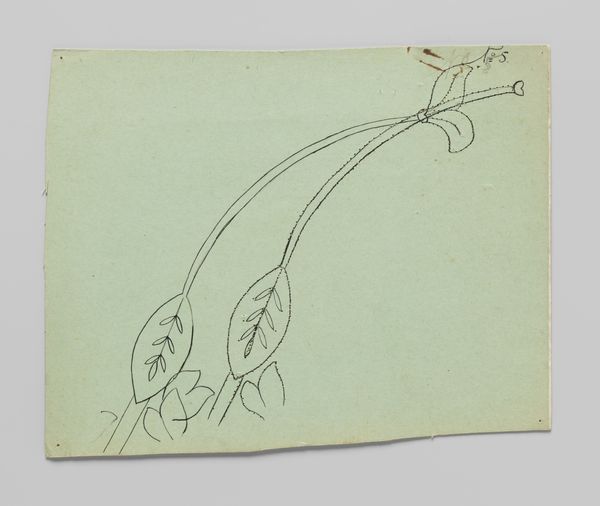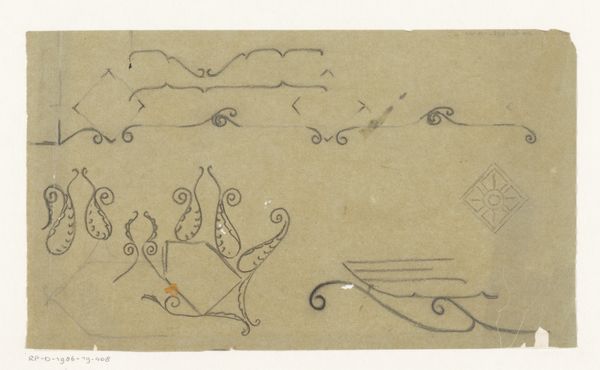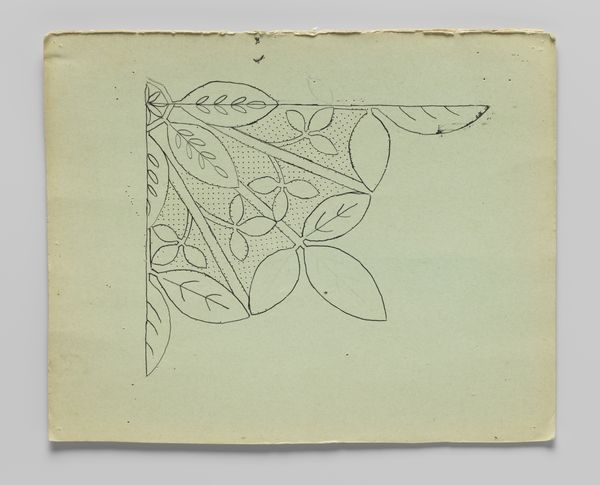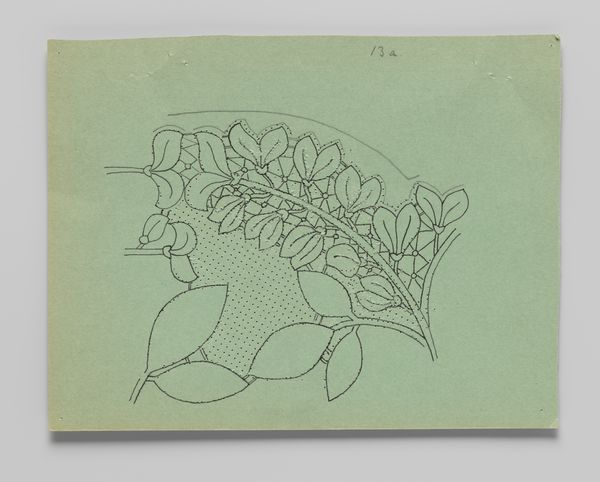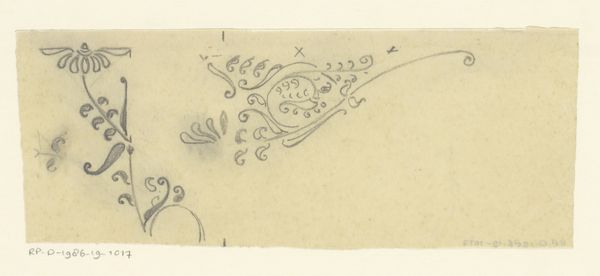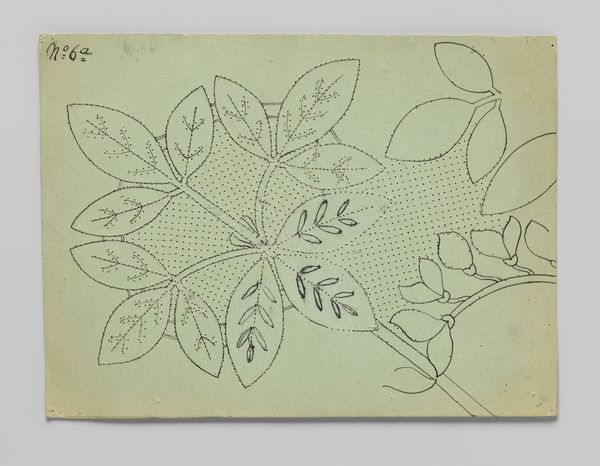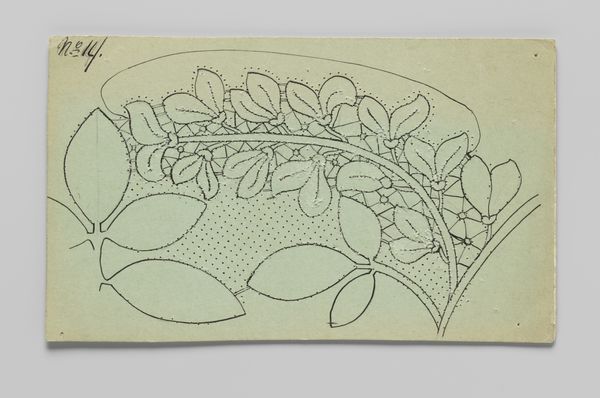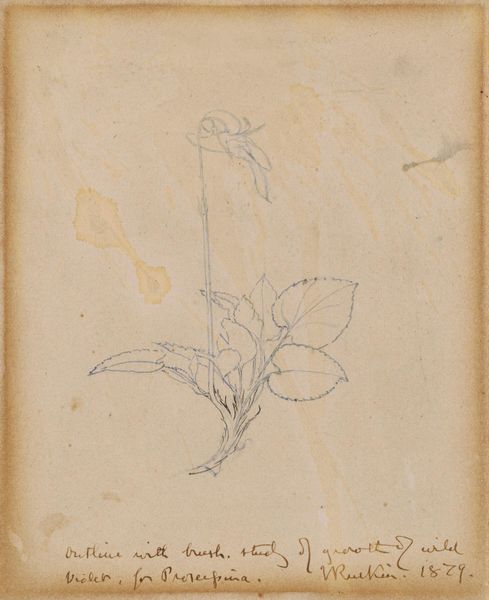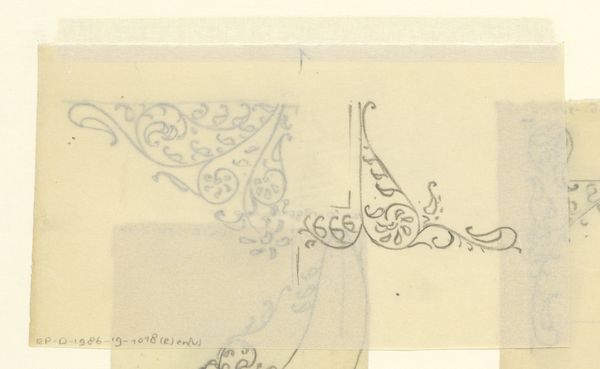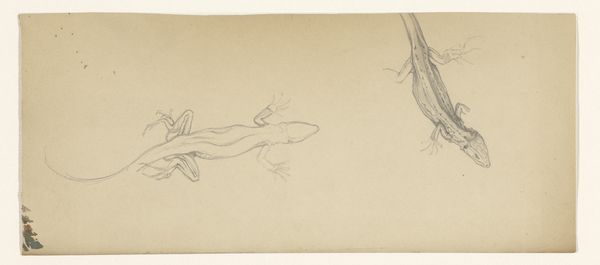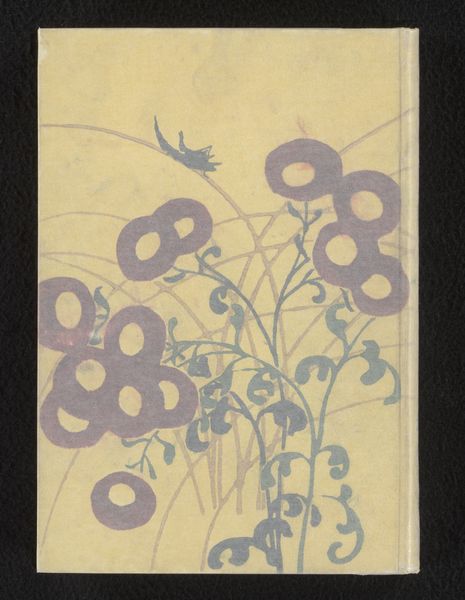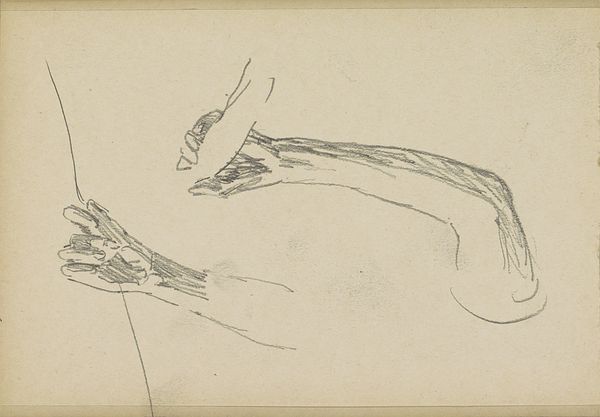
Kantpatroon voor een kleed van kloskant met goudenregentakken en -bloemen c. 1912
0:00
0:00
drawing, paper, ink
#
drawing
#
paper
#
ink
#
line
Dimensions: length 29 cm, width 23 cm
Copyright: Rijks Museum: Open Domain
Editor: This is a lace pattern drawing from around 1912, attributed to Louise Wilhelmina van der Meulen-Nulle. It's ink on paper and shows a sprig of golden rain. I'm struck by the delicate simplicity of the lines. How do you interpret this work? Curator: It is tempting to only interpret this piece based on aesthetics, but, if we are to fully contextualize van der Meulen-Nulle's work, we should look at the socio-economic conditions of the time. Early 20th century lacemaking was heavily gendered, offering work almost exclusively to women. But often for paltry pay and subject to intense capitalist exploitation. What might it mean that this “goudenregentakken," or “golden rain sprig," as pattern, emerges within such conditions? Editor: It's almost like the beauty and detail were a form of resistance. A way to reclaim artistry in a system that sought to dehumanize labor? Curator: Precisely. It allows us to move beyond a superficial reading. Furthermore, we can interrogate the very nature of "domestic" arts at this historical moment. How do they reinforce gender norms, but simultaneously, allow women to build economic networks? Or express subversive creativity? Think about how the symbolism of the flower itself connects to notions of beauty, femininity, and even hidden meanings in the Victorian language of flowers. Editor: So, you’re saying that, beneath the simple drawing, there’s a complex tapestry of social and political issues intertwined? Curator: Yes. Van der Meulen-Nulle’s work isn't just a design. It’s an artifact that reflects women’s labor, economic constraints, and potential for artistic expression within a specific historical context. We should perhaps ask ourselves how such apparently 'minor' works carry a political valence. Editor: I see this artwork very differently now! It's a reminder to look beyond the surface and consider the larger societal forces that shaped its creation. Curator: Exactly. And to ask questions about the power dynamics inherent in both the making and the viewing of art.
Comments
No comments
Be the first to comment and join the conversation on the ultimate creative platform.
